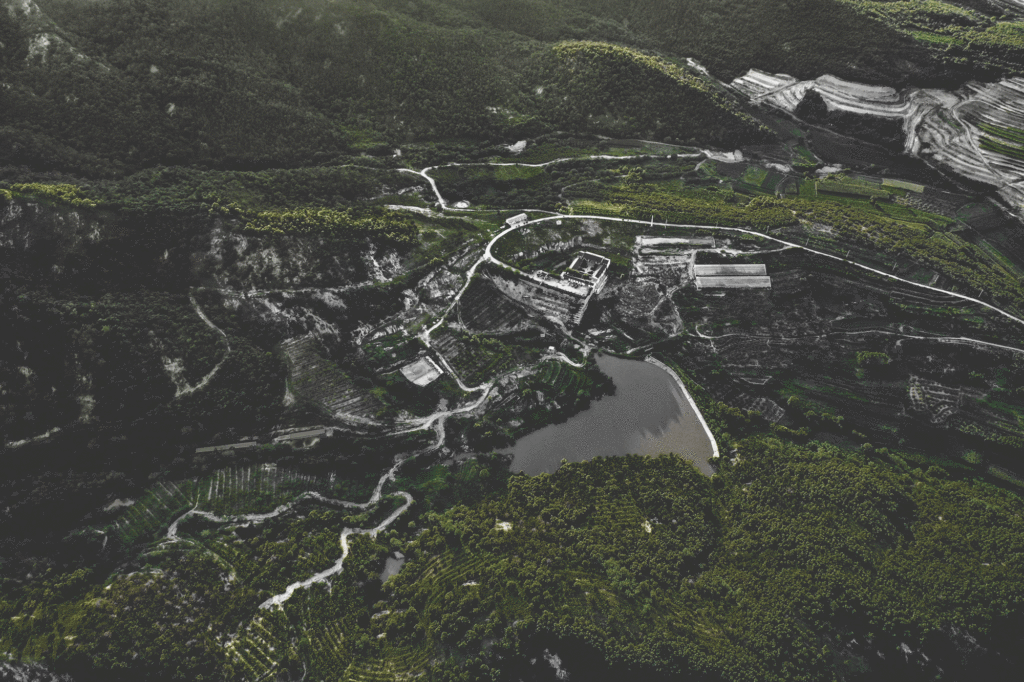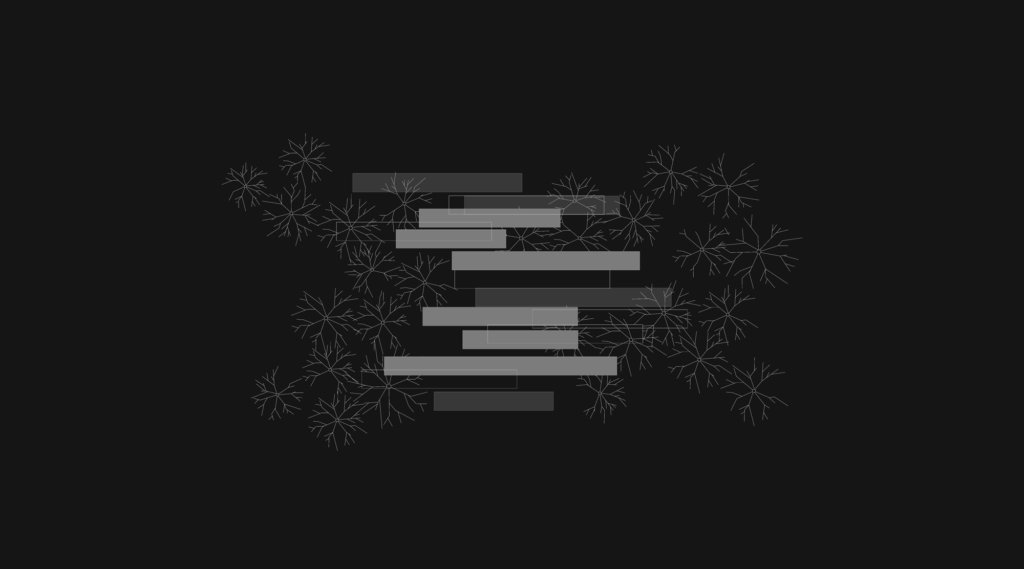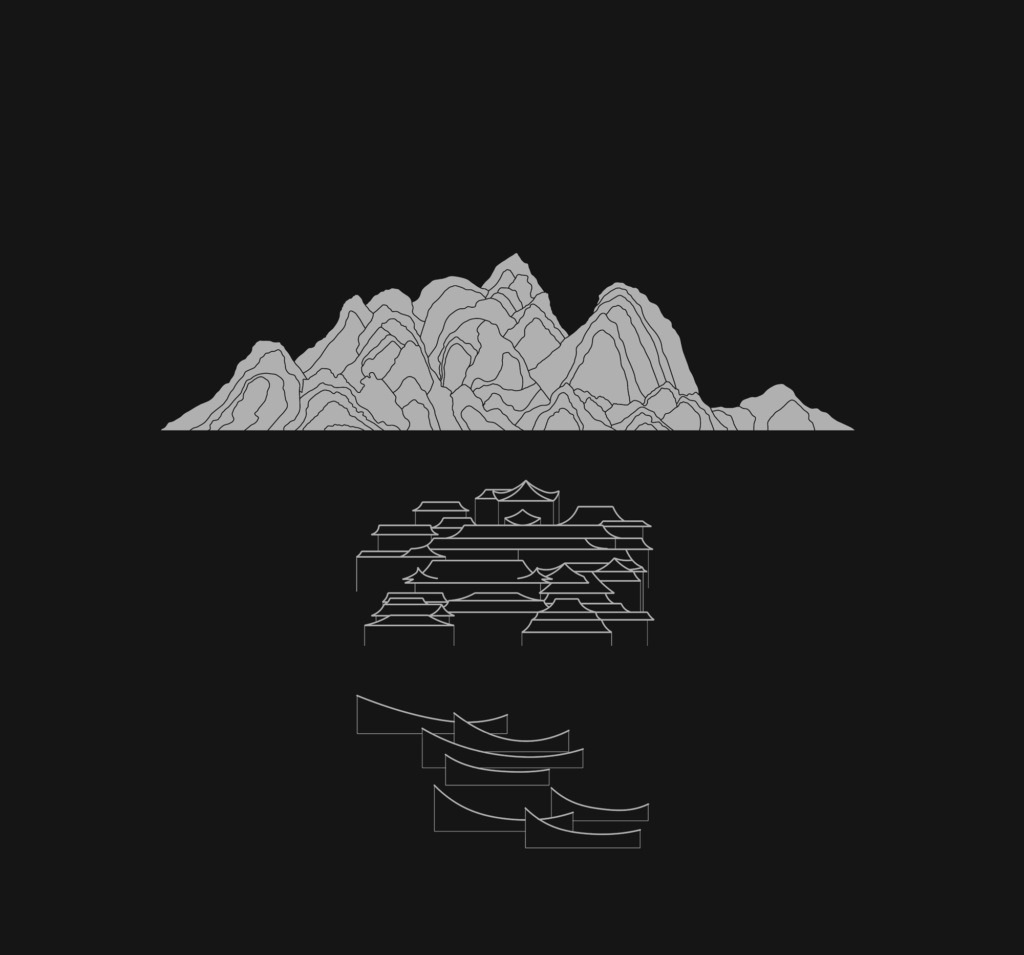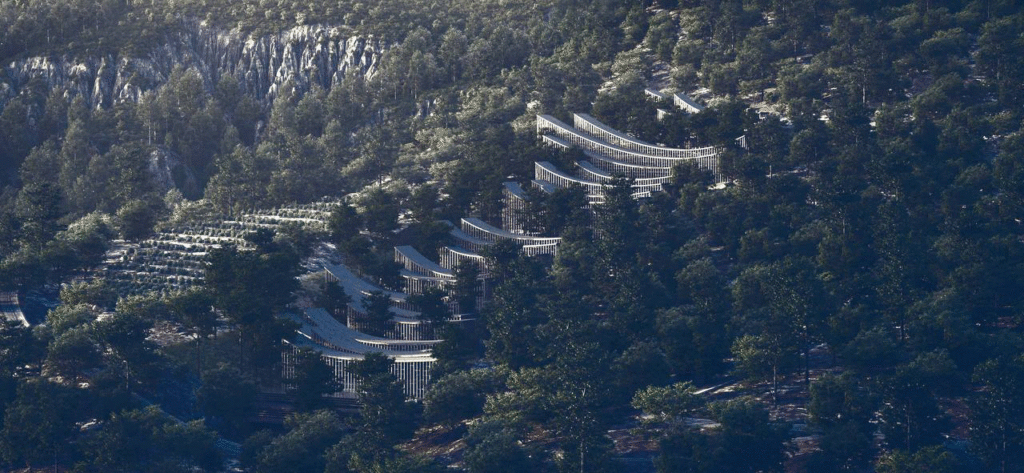
name: art museum. year:2023. client: young architects competition. situation: finalist
Contemporary China is a great nation, meeting the inescapable standards of modernity: recognizable in every place, identical to themselves in every context. Yet rural areas breathe a completely different narrative. In the endless countryside, beyond the suburbs of the immense urban centers, a China with an ancient flavor and mysterious charm still endures. Among the terraces of Shandong, next to its forests and waterways, Shandong Weihao Garden wishes to give rise to a museum hub to celebrate the local culture and artistic expression. This place will be integrated into a still unspoiled nature, reflecting contemporaneity by blending into the landscape to convey that ancient and lasting charm of a meditative, cultured and wise China millennia before any other Western civilization.

Beloved is someone who is in sync with nature
For us, the starting point of thinking about the Weihai Shandong Art Museum was to study the meaning and essence of art from the point of view of a Chinese artist. In this way, we started by examining the history, culture, nature and art of ancient China and the natural and cultural past of the region, and which surprised us was the contemporary worldview of the ancient Chinese artist is ; Ecological worldview, which has become very important for contemporary artists today. The same ecological worldview of the Chinese artist, i.e. the interweaving of time and space, as well as the change of place due to the change of time, formed the main design concept of the art museum; that the natural changes in the four seasons are the cause of life changes and place changes, and these are the changes that stimulate the artist’s emotions and strengthen his/her creative passion.

To approach the design concept, we went back to Chinese art history and used the idea of the interconnections of artistic mediums. For the ancient Chinese artist, painting was as silent poetry (poetry with form) and poetry as painting with sound (painting without form), this approach clarified the idea of the links between mediums in our minds. This ancient idea is surprisingly contemporary because the contemporary artist is not attached to a particular artistic medium and chooses the appropriate medium according to his subject and idea.

Roof art The roof has two artistic features in Chinese architecture: the beauty of form and the beauty of the idea. Here we have given it a contemporary beauty by changing the curves of the traditional Chinese roof form by harmonizing its curves with the nature of the mountains around the site. And by maintaining the independent character of the roof, as a reverse flow line, as well as by using high edges and merging it with the sky, we created a metaphysical meaning for the Chinese philosophy of the intertwining of nature and architecture (art).

In architecture, such an idea was matched with the idea of connection between architecture, nature and human being. It is as if architecture is a medium between human being and nature, and human being is a medium between architecture and nature, and nature is a medium between human being and architecture. This connection also shaped the design strategy; Continuous surfaces with the surrounding nature that penetrate the mountain layer by layer and are combined with the trees on the site and with the least amount of destruction of nature.

Due to this design approach, the change of the nature around the site, in different seasons, causes the architecture to change; It is as if nature and architecture change with each other and the layers of time and space are intertwined, which represents the concept of the design; The ecological worldview of the Chinese artist.

